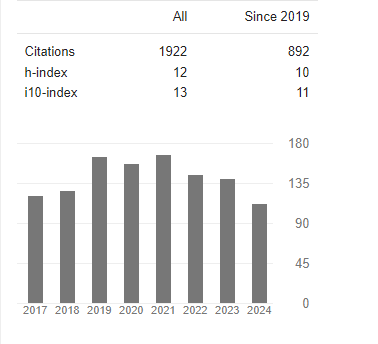Determination of Cobalt in Soils and Waters Using Silica Gel Modified with Polyhexamethylene Guanidine and Nitroso-N Salt
Abstract
Svetlana Didukh, Vladimir Losev, Alexandra Mukhina, Anatoly Trofimchuk, and Pavel Nesterenko
Highly sensitive and simple method was developed for preconcentration and determination of trace amounts of cobalt in natural waters and soils using diffuse reflectance spectroscopy was developed. Method is based on the application of the new sorbent – silica gel sequentially modified with polyhexamethylene guanidine and 2-nitroso1-naphthol-4-sulfonic acid sodium salt (nitroso-N-salt). Optimal conditions of solid-phase extraction of cobalt (II) such as stirring time, pH and volume of the solution, surface concentration of the reagent were determined. During sorption, intensively colored complex of cobalt (III) with nitroso-N-salt, that have a stripe in diffuse reflectance spectrum with maximum at 530 nm, was formed. Sorption-photometric method of cobalt determination directly in the sorbent phase by the color of its complex with nitroso-N-salt using diffuse reflectance spectroscopy was developed. The linearty of calibration curve depended on the surface concentration of nitroso-N-salt. For the surface concentration of nitroso-N-salt of 2.8 µmol g-1 the linearty was maintained in the concentration range of 0.05 – 5.0 µg Co per 0.100 g of the sorbent, or 0.005 – 0.50 µg mL-1 if the sorption was carried out from 10 mL of the solution. As the surface concentration of the reagent decreased, the range of linearty of the calibration curve narrowed. The detection limit was calculated as 0.01 μg per 0.100 g of the sorbent (or 1 ng mL-1 if the sorption was carried out from 10 mL of the solution) and didn’t depend on the surface concentration of the reagent. Method was applied to the determination of cobalt in natural waters and soils. The accuracy of the results was confirmed by inductively coupled plasma optical emission spectroscopy and recovery test of spiked samples.



